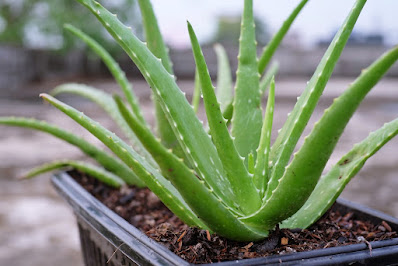Introduction:
Aloe Vera is a versatile, low-maintenance plant that can thrive both indoors and outdoors, making it a popular choice for home gardeners. Known for its medicinal properties, this succulent not only adds greenery to your space but also serves as a handy home remedy for burns, cuts, and other skin ailments. Here’s a comprehensive guide to cultivating Aloe Vera in your home garden.
Choosing the Right Location
Aloe Vera plants require plenty of sunlight to grow well. When selecting a spot in your garden, opt for an area that receives at least six to eight hours of direct sunlight daily. If you’re growing Aloe Vera indoors, place it near a south or west-facing window to ensure it gets adequate light. In regions with extremely hot climates, a spot that receives some afternoon shade can help protect the plant from scorching.
Soil Requirements
Aloe Vera prefers well-draining soil to prevent waterlogging, which can lead to root rot. A cactus or succulent potting mix is ideal, as it typically contains sand, perlite, and other materials that improve drainage. If you’re using regular garden soil, enhance its drainage by mixing in coarse sand or gravel.
Planting Aloe Vera
When planting Aloe Vera, choose a pot with drainage holes if you’re growing it in a container. This prevents excess water from accumulating at the bottom. If planting directly in the ground, dig a hole that is slightly wider and deeper than the root ball. Place the plant in the hole and backfill with soil, ensuring the base of the leaves is just above the soil surface.
Watering Guidelines
One of the most common mistakes when growing Aloe Vera is overwatering. These succulents store water in their leaves and can tolerate drought better than excess moisture. Water the plant deeply but infrequently, allowing the soil to dry out completely between waterings. In the summer, this might mean watering every three weeks, while in the winter, watering once every month or two is usually sufficient.
Temperature and Humidity
Aloe Vera is well-suited to a range of temperatures but thrives best in warm conditions. Ideally, keep the plant in temperatures between 55°F (13°C) and 80°F (27°C). While it can tolerate brief periods of cold, it’s best to bring the plant indoors if temperatures are expected to drop below 40°F (4°C). Aloe Vera does not require high humidity and generally thrives in the average humidity levels found in most homes.
Fertilization
Aloe Vera plants do not require frequent fertilization. Applying a diluted, balanced, water-soluble fertilizer once in the spring will suffice. Over-fertilizing can harm the plant, so it’s better to err on the side of caution.
Propagation
Aloe Vera plants produce offsets, also known as “pups,” which are smaller plants that grow from the base of the main plant. These pups can be separated and planted individually to propagate new Aloe Vera plants. Gently remove the pup from the parent plant, ensuring it has a few roots attached. Plant it in a separate pot with well-draining soil and care for it as you would a mature Aloe Vera.
Common Problems and Solutions
1. Overwatering:
The most common issue with Aloe Vera is overwatering, leading to root rot. Ensure the soil is completely dry before watering and always use well-draining soil.
2. Pests:
Aloe Vera can occasionally be affected by pests like aphids, mealybugs, and spider mites. Wipe the leaves with a mixture of water and mild soap to remove pests, or use insecticidal soap if the infestation is severe.
3. Sunburn:
While Aloe Vera needs plenty of sunlight, too much direct exposure, especially in extremely hot climates, can cause the leaves to turn brown or red. Move the plant to a location with partial shade during the hottest part of the day.
Harvesting Aloe Vera
To harvest Aloe Vera gel, select mature leaves from the outermost part of the plant. Cut the leaf close to the base and allow the yellow latex to drain out, as it can be irritating to the skin. Peel away the outer skin to reveal the clear gel inside, which can be used directly or stored in the refrigerator for later use.
Conclusion
Cultivating Aloe Vera in your home garden is a rewarding endeavor. With its minimal care requirements and myriad benefits, Aloe Vera is an excellent addition to any garden. By following these guidelines, you can enjoy healthy, thriving Aloe Vera plants year-round.




.jpg)
.jpg)
.jpg)

0 Comments